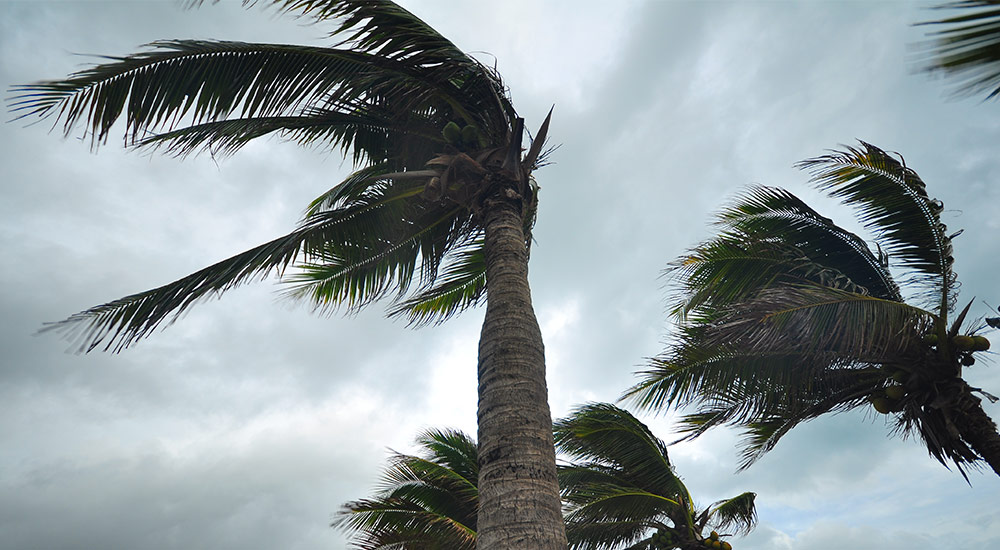Top Things to Know About the 2025 Hurricane Season

With the 2025 hurricane season already in progress, it's vital to focus on awareness and preparedness. The NOAA anticipates above-average activity this year, predicting 13-19 named storms, with 6-10 expected to develop into hurricanes. A deeper understanding of these powerful natural phenomena can significantly enhance safety measures and readiness.
When Is Hurricane Season?
The Atlantic hurricane season officially starts on June 1 and ends after November 30. During this period, conditions are ripe for hurricanes to form. These powerful storms are born from warm ocean waters and atmospheric disturbances. The peak of the season often occurs in early September.
The hurricane season for the eastern Pacific, which includes the U.S. West Coast, officially runs from May 15 through November 30. While these hurricanes are rare, they may bring severe winds, heavy rain, or flood conditions to otherwise dry regions in the western United States.
Historical Context and Predictions
Historical data provides valuable insights into hurricane patterns. For instance, the Atlantic hurricane season has seen an increase in storm activity over the past decades. Predictions for upcoming seasons are made by meteorologists, and they use complex models to forecast the number and intensity of hurricanes.
The Saffir-Simpson Hurricane Wind Scale Explained
The Saffir-Simpson Hurricane Wind Scale is a tool used to categorize hurricanes. It ranges from Category 1 (least severe) to Category 5 (most severe). This scale is based on a hurricane's sustained wind speed. It helps predict potential damage and flooding.
Preparing for Hurricanes
Preparation is key to weathering a hurricane safely. It involves creating an evacuation plan, assembling an emergency kit, and securing your property. It's also important to protect important documents and valuables. These steps can help reduce the impact of a hurricane on your life and property.
Creating Your Evacuation Plan
A hurricane evacuation plan outlines where you'll go and how you'll get there if you need to leave your home. It should include a designated meeting place and multiple evacuation routes. Here are some points to consider when creating your plan:
- Identify safe locations in your community or nearby cities.
- Plan for your pets. Not all shelters accept pets, so research pet-friendly options.
- Keep a list of emergency contacts, including local shelters and emergency services.
Emergency Kit Essentials
An emergency kit is a collection of items you may need in a disaster. It should be packed and ready to go during hurricane season.
Your kit should include:
- Water and non-perishable food for at least three days.
- First aid supplies and at least two weeks of prescription medications.
- A waterproof copy of key personal, financial, insurance and medical records.
- Flashlights, extra batteries, and a battery-powered or hand-crank radio.
Securing Your Property and Insurance
Securing your property can minimize damage from a hurricane. This includes trimming trees, securing outdoor furniture, and installing storm shutters. It's also crucial to review your insurance policies; and you may want to consider contacting an insurance agent near you as they understand local weather trends and risks. Ensure they cover the types of damage a hurricane can cause, such as wind damage and flooding.
Protecting Important Documents and Valuables
Important documents and valuables should be protected from potential damage. Store them in a waterproof, fireproof safe or a safety deposit box. These documents may include birth certificates, social security cards, insurance policies, and property deeds. It's also wise to keep digital copies of these documents.
Staying Informed and Connected
Staying informed is crucial during hurricane season. Reliable sources of information can help you prepare and respond effectively. The National Hurricane Center provides updates and forecasts. Local news outlets also offer valuable information about local conditions and resources.
Utilizing Technology for Alerts and Updates
Technology can be a valuable tool during hurricane season. There are numerous apps and online resources that provide real-time updates and alerts. These tools can help you track hurricanes, understand their potential impact, and make informed decisions.
Communication Plans and Local Resources
A communication plan ensures you can stay in touch with family and friends during a hurricane. It should include a list of emergency contacts and a plan for staying connected if traditional communication channels fail. Local resources, such as emergency management offices and community organizations, can provide assistance and information. It's important to know how to access these resources.
Understanding Watches and Warnings
A hurricane watch means hurricane conditions (sustained winds of 74 mph or higher) are possible within 48 hours. A hurricane warning means hurricane conditions are expected within 36 hours.
After the Storm: Recovery and Community Support
The aftermath of a hurricane can be overwhelming. It's important to have a plan for recovery and cleanup. Post-hurricane cleanup can also be hazardous. Be aware of potential risks like contaminated water or unstable structures.
- Wear protective gear during cleanup
- Follow local guidelines for debris disposal
- Check for gas leaks or electrical system damage
Supporting Recovery Efforts and Local Businesses
Supporting local businesses is a great way to aid recovery. Often, they are hit hard by natural disasters. You may also want to consider volunteering in community preparedness efforts.
Originally posted on May 10, 2024 and updated June 18, 2025.

